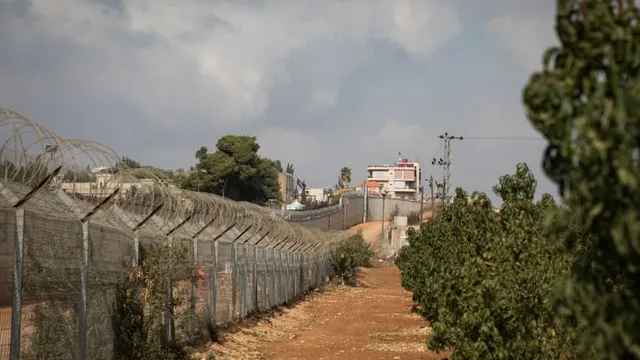
Hezbollah threatens retaliation against Israel if attacks persist
2025-04-01 17:35- Israel conducted an airstrike on Beirut after rockets were fired from Lebanon towards Israel, though Hezbollah denied launching them.
- Hezbollah leader Naim Qassem stated that the group is committed to the ceasefire but will consider other actions if Israeli attacks continue.
- The ongoing violence raises concerns of a potential escalation in conflict, affecting both Lebanese and Israeli civilians.
Express your sentiment!
Insights
In March 2025, Israel launched an attack on Beirut, Lebanon, marking its first strike on the capital since a ceasefire ended the Israel-Hezbollah war in November 2024. The airstrike followed the firing of two rockets from Lebanon toward Israel, which Hezbollah denied initiating. This situation has escalated tensions in the region, as Israeli military actions have reportedly resulted in civilian casualties, including women and children. Hezbollah's leader, Naim Qassem, expressed that the group remains committed to the ceasefire but is prepared to pursue other means of resistance should Israel persist in its military aggression. Under the ceasefire agreement brokered by the United States, Israeli forces were to withdraw from Lebanese territories, while Hezbollah was required to end its military presence south of the Litani River. Despite these obligations, Israeli forces have continued their operations, conducting airstrikes on various Hezbollah targets within Lebanon, considerably straining the already fragile peace between the two entities. Qassem described the Israeli strikes as not merely violations but acts of aggression that cross all limits. The Israeli government has reacted to the continued hostilities by performing airstrikes, which have now resulted in multiple fatalities and injuries among Lebanese civilians, further complicating the situation on the ground. Hezbollah has maintained that these Israeli aggressions have not gone unanswered, but the organization has sought to project an image of restraint as it navigates the delicate balance between responding to provocations and adhering to the ceasefire. The accumulation of violence has led to apprehension regarding the possibility of renewed conflict between Hezbollah and Israel, particularly with the backdrop of recent regional tensions. As tensions mount, Qassem emphasized that the group would exhaust all political options before resorting to its military capabilities, asserting Hezbollah's strength in countering Israeli and American projects in the region. The threat of a resumption of hostilities looms, especially given that the humanitarian situation in Lebanon is already precarious, with many residents still feeling the repercussions of earlier conflicts. The Israeli government, on the other hand, has faced criticism from its own citizens regarding its strategic handling of the ceasefire, which many feel is inadequate in protecting Israeli territory from the threats posed by Hezbollah.
Contexts
The Hezbollah-Israel conflict has a long and complex history, rooted in political, religious, and territorial disputes. Hezbollah, a Shiite militant group formed in the early 1980s in Lebanon, emerged as a response to Israel's invasion of Lebanon in 1982. The group's primary objectives include resisting Israeli occupation and promoting Islamic governance. While Hezbollah has garnered support from Iran and Syria, it has also become a significant player in Lebanese politics. Israel, for its part, views Hezbollah not only as a militant threat but also as an Iranian proxy aiming to extend Tehran's influence in the region. This conflict is often exacerbated by broader geopolitical tensions involving the United States, Iran, and other regional actors, leading to a cycle of violence that has persisted for decades. In 2006, the most significant confrontation occurred during the Second Lebanon War, following Hezbollah's abduction of two Israeli soldiers. The conflict lasted for 34 days, resulting in considerable casualties and destruction, particularly in Lebanon. Despite the heavy toll, Hezbollah emerged politically strengthened, gaining considerable support among Lebanese citizens for standing up to Israel. Since then, periodic skirmishes and flare-ups along the Israel-Lebanon border have continued, reflecting ongoing tensions that remain unresolved. Additionally, the Syrian Civil War has further complicating the dynamics, with Hezbollah actively supporting the Assad regime, which has drawn Israel's concern regarding the enhanced military presence of its adversaries. As of March 2025, the situation remains precarious, with escalating rhetoric from both sides and increased military posturing. A series of recent incidents, including missile exchanges and border skirmishes, suggest that a significant confrontation could be imminent. The regional landscape is further complicated by the influence of Iran, which continues to provide military and financial support to Hezbollah. Additionally, Israel’s airstrikes on various targets in Syria, aimed at preventing the transfer of advanced weaponry to Hezbollah, have increased tensions, making future conflicts ever more likely. The Israeli military's ongoing operations and its policy of preemptive strikes aim to mitigate threats posed by Hezbollah, which Israel considers a direct existential threat. In conclusion, the Hezbollah-Israel conflict remains a significant flashpoint in the Middle East, characterized by deep-seated animosities and a constant cycle of violence. The interplay of local grievances, sectarian divides, and broader geopolitical rivalries shapes the prospects for peace. While there are ongoing efforts to broker ceasefires and frameworks for resolution, the underlying issues—such as territorial disputes, the status of Palestinian refugees, and regional power dynamics—continue to undermine efforts for lasting peace. As regional and global powers assess the situation, understanding the complex history and motivations of both Hezbollah and Israel will be crucial in navigating potential paths toward de-escalation and stability in this volatile region.